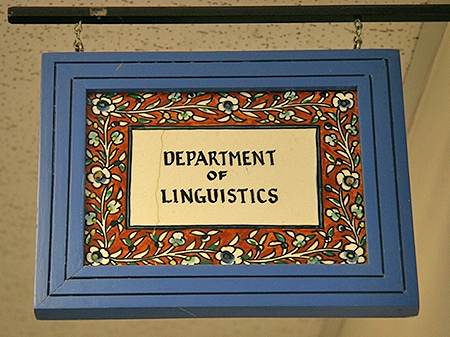
Linguistics ETDs
Publication Date
Fall 12-18-2016
Abstract
This dissertation uses corpus data from ASL and Libras (Brazilian Sign Language), to investigate the distribution of a series of static and dynamic handshapes across the two languages. While traditional phonological frameworks argue handshape distribution to be a facet of well-formedness constraints and articulatory ease (Brentari, 1998), the data analyzed here suggests that the majority of handshapes cluster around schematic form-meaning mappings. Furthermore, these schematic mappings are shown to be motivated by both language-internal and language-external construals of formal articulatory properties and embodied experiential gestalts.
Usage-based approaches to phonology (Bybee, 2001) and cognitively oriented constructional approaches (Langacker, 1987) have recognized that phonology is not modular. Instead, phonology is expected to interact with all levels of grammar, including semantic association. In this dissertation I begin to develop a cognitive model of phonology which views phonological content as similar in kind to other constructional units of language. I argue that, because formal units of linguistic structure emerge from the extraction of commonalities across usage events, phonological form is not immune from an accumulation of semantic associations. Finally, I demonstrate that appealing to such approaches allows one to account for both idiosyncratic, unconventionalized mappings seen in creative language use, as well as motivation in highly conventionalized form-meaning associations.
Keywords
Cognitive Phonology, Signed Languages, Usage-based Approaches
Document Type
Dissertation
Degree Name
Linguistics
Level of Degree
Doctoral
Department Name
Department of Linguistics
First Committee Member (Chair)
Sherman Wilcox
Second Committee Member
Jill Morford
Third Committee Member
Phyllis Wilcox
Fourth Committee Member
Joan Bybee
Fifth Committee Member
Teenie Matlock
Recommended Citation
Occhino, Corrine. "A COGNITIVE APPROACH TO PHONOLOGY: EVIDENCE FROM SIGNED LANGUAGES." (2016). https://digitalrepository.unm.edu/ling_etds/46
